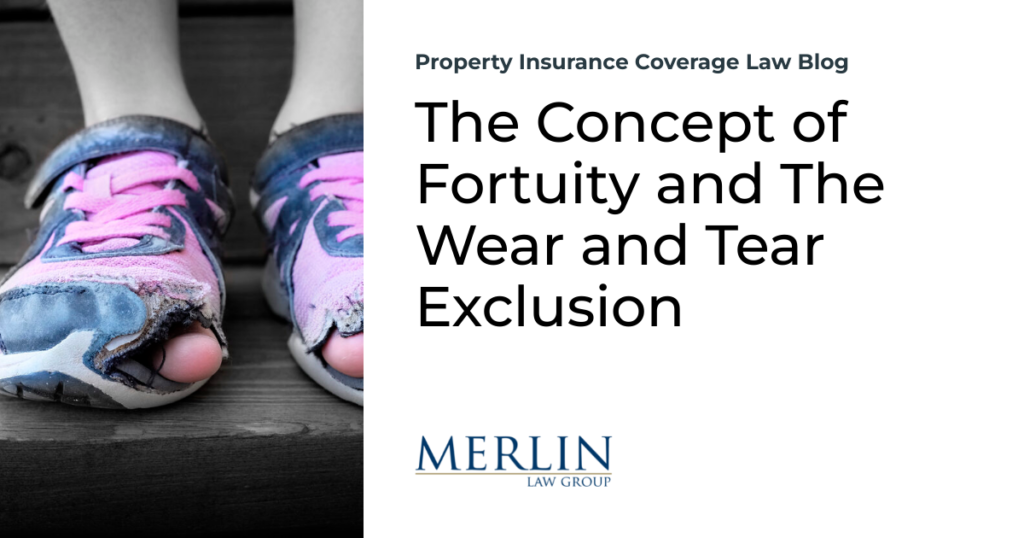The Concept of Fortuity and The Wear and Tear Exclusion

The exclusion for “wear and tear” comes from the concept and need of fortuity in an “all-risk” insurance policy. The 1928 “All Risks Personal Effects Floater” policy was a significant step leading to the modern Open Perils or All Risk policy forms. This 1928 policy insured against “all risk of loss or damage” and scheduled exclusions rather than covering for scheduled perils.1 When considering yesterday’s post, Do Insurers Wrongfully Deny Claims Based Upon the Vague Wear and Tear Exclusion?, the concept of fortuity and “risk” is central to the reason for the wear and tear exclusion.
In Development of Comprehensive Insurance For The Household,2 the author, John Pierce, noted regarding this 1928 form policy:
This policy, however, did not cover insurance against every possible kind of loss, because some losses would have causes other than ‘risk.’ A risk implies a chance occurrence—a fortuitous or unexpected event which results in loss.
“Wear and tear of items” is not a risk because, in the normal usage of items, things will wear out and break. John Pierce stated that the “wear and tear” exclusion, along with exclusions for “inherent vice” and “gradual deterioration,” were included in the policy list of exclusions for the purpose of “making certain that the intended interpretation would be placed upon the words “all-risks.”
A discussion of the concept of fortuity from a Canadian perspective is The Insuring Agreement: Key Concepts of Fortuity, Accident, Occurrence, and Property Damage:3
The necessity of fortuity seems to spring from a recognition that insurance contracts are commercial transactions. It is thus presumed that the insurer and insured would both intend to conclude a commercially sensible arrangement. The insured could not reasonably expect that any and every loss, however caused, would be reimbursed. That would furnish a windfall to the insured. By the same token, the insurer cannot confine causation to the point where recovery would be impossible, thereby affording a windfall in the other direction. Balance is achieved by requiring that the loss be accidental or fortuitous—i.e., that it be out of the reasonable control and expectation of both the insurer and insured.
Our law firm has cases all over the country. The case law discussion of fortuity is slightly different from jurisdiction to jurisdiction. This Canadian paper is useful to our practice and our arguments on behalf of policyholders and coverage because it critically notes that American law has seemingly placed a broader definition upon the circumstances in which American courts may consider an event to be non-fortuitous.
The lesson is that the “wear and tear” exclusion and those listed next to it are in all risk insurance policies for historical purposes of maintaining the fortuity concept of insurance. Enlarging the definition of “wear and tear” beyond that purpose and concept would be improper.
If you wish to study more about fortuity, I suggest using this blog’s search function by writing the word “fortuity” and reading Basic Thresholds to Coverage: Deconstructing the All-Risk Policy.
Thought For The Day
Life’s most persistent and urgent question is, ‘What are you doing for others?
—Martin Luther King, Jr.
1 Development of Comprehensive Insurance For The Household, pp. 43-44 (J. Pierce 1958).
2 Development of Comprehensive Insurance For The Household. By John Eugene Pierce. Homewood, Illinois. Richard D. Irwin, Inc., 1958.
3 Karen L. Weslowski. The Insuring Agreement: Key Concepts of Fortuity, Accident, Occurrence, and Property Damage. Insurance Law Conference, Paper 24. (Sept. 2011).







